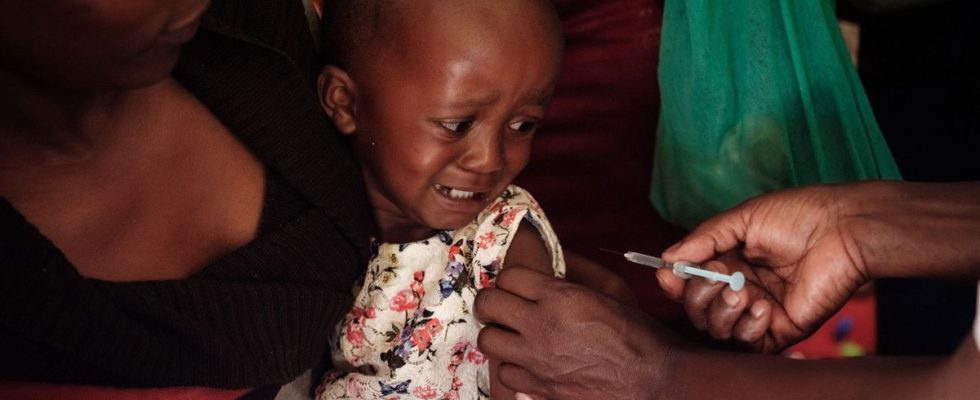Published on
Updated
Reading 2 min.
Malaria, which is World Day on Thursday, remains a scourge on a global scale, despite the start of promising vaccination campaigns in Africa.
“Despite efforts, malaria remains a serious problem for global health, taking a heavy toll on the most vulnerable populations“, underlines Dr Daniel Ngamije, head of the malaria program of the World Health Organization (WHO) on the occasion of the world day.
Also called malaria, this disease caused the death of 608,000 people worldwide in 2022, according to the latest figures available from the WHO.
Five things to know about an infection caused by a tiny parasite transmitted by mosquito bites, which causes fever, headache and chills until becoming a serious, potentially fatal condition if left untreated.
Nearly 250 million cases
The WHO has estimated that 249 million people will be affected by malaria in 2022, an increase of 2% compared to the previous year (244 million).
This progression is due to an explosion of cases in Pakistan after “catastrophic floods” and to an expansion of the disease in Ethiopia, Uganda and Papua New Guinea.
Nigeria, the most populous country in Africa, is the one which recorded the highest number of cases in the world in 2022 with 66 million, ahead of the Democratic Republic of Congo (DRC) with 30 million cases.
Infants, young children, pregnant women and people living with HIV are most likely to develop a severe form of the disease.
Especially in Africa
The vast majority of cases (94%) and deaths (95%) occur in Africa, which continues to “bear a disproportionate share of the global malaria burden“, deplores the WHO.
Half of all malaria deaths are concentrated in four African countries: Nigeria (31.1%), DRC (11.6%), Niger (5.6%) and Tanzania (4.4%) .
The most numerous victims are children under five years old: in Africa this category represents 78% of deaths.
However, on a global scale, infant mortality from malaria is tending to decline, with a drop of more than 50% in annual deaths among children under 5 since 2000.
Threat of climate change
Climate disruption with its floods and heat waves has a “direct effect” on the transmission and impact of the disease, underlines the WHO.
“Climate change poses a significant threat to progress against malaria, especially in vulnerable regions“, warns its leader Tedros Adhanom Ghebreyesus.
Thus, the exceptional floods which hit Pakistan in 2022 led to a five-fold increase in cases of malaria in the country.
“Worrying” resistance
Recommended treatments for malaria are artemisinin-based treatments. But “worrying” cases of resistance to these drugs have appeared, in South-East Asia and then in Africa.
This situation led the WHO to put in place, at the end of 2022, a new strategy to counter this emerging problem in Africa.
On the same continent, the appearance of a new mosquito, coming from Asia and the Arabian Peninsula, Anopheles stephensi, is another source of concern. The insect, now present throughout the Horn of Africa as well as Nigeria and Ghana, has proven resistant to a number of insecticides.
Large-scale vaccination
Cameroon then Burkina Faso launched the first systematic vaccination campaigns against malaria in January and February 2024, with the RTS,S vaccine from the British pharmaceutical group GSK.
A second vaccine, R21, manufactured by the Serum Institute of India (SII) and cheaper, will begin to be distributed in Africa in May.
These two serums are recommended by the WHO for young children in regions where the disease is endemic.
These two vaccines will make it possible to better control the disease and “to save hundreds of thousands of young lives in Africa“, according to Dr Matshidiso Moeti, WHO Regional Director for Africa.
